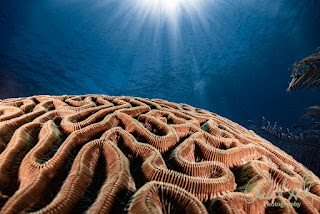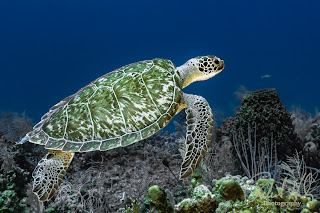Mastering Metering Modes in Photography
A Comprehensive Guide for Underwater Hobbyist and Enthusiast Photographers
Introduction: Metering modes are a critical aspect of photography, influencing how a camera interprets and calculates exposure based on available light. Photography hobbyists and enthusiasts might find these metering modes perplexing. This guide delves into the various metering modes, shedding light on their functionalities, applications, and the advantages and disadvantages for aspiring underwater photographers.
Understanding Metering Modes: Let's explore five primary metering modes, each contributing to the art of exposure calculation:
- Evaluative Metering (Matrix Metering):
- How it works: Divides the frame into zones, analyzing contrast, color, and brightness to calculate an overall exposure.
- Where it measures: The entire frame.
- Best for: Versatile scenarios without extreme brightness variations.
- Advantages: Effective in balanced scenes with sophisticated algorithms for accurate metering.
- Disadvantages: Challenges arise in high-contrast situations, aiming for an average exposure.
- Center-Weighted Metering:
- How it works: Prioritizes the central area, assigning greater importance to its brightness.
- Where it measures: Primarily the central area (60-80% of the frame).
- Best for: Portraits and centrally positioned subjects.
- Advantages: Simple and reliable, especially with centered subjects.
- Disadvantages: This may result in improper exposure when subjects are off-center or when there's significant contrast.
- Spot Metering:
- How it works: Evaluates a small, user-defined spot (2-5% of the frame) for precise exposure calculations. On some cameras, this spot can be repositioned within the frame.
- Where it measures: A specific spot chosen by the photographer.
- Best for: High-contrast scenes, backlit subjects, or situations demanding precise exposure control.
- Advantages: Grants photographer's control over exposure for specific elements.
- Disadvantages: Requires a solid understanding of exposure, with potential inaccuracies if the spot is misplaced.
- Partial Metering:
- How it works: Like spot metering but covers a larger area (10-15% of the frame).
- Where it measures: A larger central area than spot metering.
- Best for: More flexibility than spot metering but with emphasis on the central area.
- Advantages: Strikes a balance between spot and evaluative metering.
- Disadvantages: Challenges persist in scenes with extreme contrast.
- Averaging Mode:
- How it works: Calculates exposure based on the average brightness of the entire frame.
- Where it measures: The entire frame.
- Best for: Balanced scenes where consistent exposure across the frame is desired.
- Advantages: Effective in scenes with uniform lighting.
- Disadvantages: May struggle in high-contrast situations, providing an average exposure that might not suit every element.
Conclusion: By mastering these metering modes, photographers can elevate their craft. Experiment with each mode in diverse scenarios, understand their strengths and limitations and adapt your approach based on unique subject and scene requirements. Practice and analysis will refine your skills, enabling you to capture visually stunning photographs in various lighting conditions.
Allow me to assist you in your underwater photographic journey with my upcoming online training course, which I will be announcing soon. If you are keen on acquiring more knowledge about it, kindly email me at bob@robertherb.com. You can also visit my website (Robert Herb Photography) to view some of my exemplary work.
I am eagerly anticipating your valuable feedback and suggestions.
Sincerely,
Bob Herb




Comments
Post a Comment
Please let me know your comments.